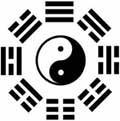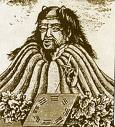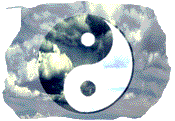Carl Jung Resources - I Ching
In his introduction to the English version of I Ching made by one of his acquaintance*, Jung admits having
For more than thirty years I have interested myself in this oracle technique, or method of exploring the unconscious, for it has seemed to me of uncommon significance. I was already fairly familiar with the I Ching when I first met Wilhelm in the early nineteen twenties; he confirmed for me then what I already knew, and taught me many things more. (Foreword to the I Ching, I Ching, Wilhelm/Baynes edition). Using the oracle with his patients during the psychotherapy Jung c ould remember a great deal of meaningful answers. He recalled the story of a patient stuck between ambivalent feelings related to a girl he wanted to ask out (actually the patient suffered from a mother complex). The response of I Ching was hexagram 44, entitled Coming to Meet, which worn saying: One should not marry such a maiden .
This principle matches the curious mode of functioning of the ancient Chinese mind. Again Jung: The Chinese mind, as I see it at work in the I Ching, seems to be exclusively preoccupied with the chance aspect of events. What we call coincidence seems to be the chief concern of this peculiar mind, and what we worship as causality passes almost unnoticed. (Foreword to the I Ching...) In other words: ...Whoever invented the I Ching was convinced that the hexagram worked out in a certain moment coincided with the latter in quality no less than in time. To him the hexagram was the exponent of the moment in which it was cast. (Foreword to the I Ching...) Psyche and matter are not separated in fact, nor are the inner and outer worlds. In concordance with the synchronicity principle, the psychic events and those happening in the outside world may have an acausal, almost simultaneous appearance, a so-called coincidence, and this is why one can use even the ancient method of consulting the oracle to cure neurosis.Finally: The ancient Chinese mind contemplates the cosmos in a way comparable to that of the modern physicist, who cannot deny that his model of the world is a decidedly psychophysical structure. The psychophisical event includes the observer just as much as the reality underlying the I Ching comprises subjective, i.e., psychic conditions in the totality of the momentary situation. (Foreword to the I Ching...) As for the practice of I Ching, Jung offers a sample on how to handle the oracle and interpret its answers in his substantial introduction to the book.*
Further Resources Articles
Treating of Jung and I Ching, the usage of I Ching in dream analysis and Jungian therapy: -> Jung and I Ching (PDF) - -> I Ching and Psychotherapy (PDF) - click -> Example of Using I Ching in Dream Interpretation (PDF) -
click
Email Course for Beginners
You may study the content and usage of I Ching by taking our short course intended for beginners -> I Ching Online -> Everything you need to know about the I Ching history,
content, hexagrams, philosophy and more... may be found -> If you know how, you may consult the I Ching oracle with support right now here. Must-Read * The Wilhelm/Baynes edition of I Ching - the English
translation supervised by Jung himself. You may buy it online from Amazon.com - here's the link: Understanding the I Ching by Hellmut Wilhelm explains the main features of the book. You may order it from Amazon.com: https://amzn.to/2ExGExx. |
©AROPA, 2025.


